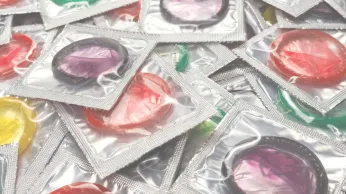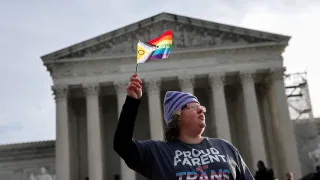
8 hours ago
STI Rates in the U.S. Remain High: Disparities and Urgent Calls for Action in Queer Communities
READ TIME: 3 MIN.
The latest data from the U.S. Centers for Disease Control and Prevention (CDC) reveal that sexually transmitted infections (STIs) remain a significant public health challenge. In 2023, the United States saw more than 2.4 million reported cases of chlamydia, gonorrhea, and syphilis, with chlamydia accounting for over 1.6 million cases, gonorrhea over 600,000, and syphilis—across all stages—over 209,000 cases. Disturbingly, the nation also recorded 3,882 cases of congenital syphilis, which resulted in 279 stillbirths and infant deaths, underscoring the urgent need for comprehensive sexual health strategies and interventions .
While 2023 saw a modest 1.8% decrease in overall reported STI cases compared to the previous year, the data show nuanced trends: gonorrhea diagnoses dropped by 7.2%, chlamydia rates remained stable, and syphilis cases—including congenital syphilis—increased by 1%. These numbers, however, do not tell the full story for LGBTQ+ communities, who continue to experience disproportionate impacts, particularly among gay, bisexual, and other men who have sex with men (MSM). In 2023, MSM were overrepresented in both gonorrhea and primary and secondary (P&S) syphilis diagnoses, with 37.2% of MSM diagnosed with P&S syphilis also living with HIV .
Racial and ethnic disparities remain a significant concern. Black or African American individuals accounted for 32.4% of all chlamydia, gonorrhea, and syphilis cases, despite making up just 12.6% of the U.S. population. Additionally, rates of P&S syphilis and congenital syphilis were highest among American Indian or Alaska Native persons, highlighting the intersection of sexual health and health equity .
The burden of STIs within LGBTQ+ populations, especially MSM, is compounded by overlapping risk factors and barriers to care. Reduced access to culturally competent healthcare, persistent stigma, and the intersecting impacts of racism and socioeconomic inequality limit opportunities for prevention, testing, and treatment. During the COVID-19 pandemic, many state and local health programs experienced budget cuts, leading to clinic closures, reduced screenings, and diminished patient follow-up—further exacerbating health disparities for vulnerable groups, including LGBTQ+ individuals .
Sexually transmitted infections can have severe health consequences, including increased risk of HIV transmission, infertility, and, in the case of congenital syphilis, devastating outcomes for infants. The CDC and public health advocates stress that a comprehensive response must prioritize access to regular screening, PrEP for HIV prevention, patient education, and nonjudgmental, inclusive care tailored to the needs of LGBTQ+ people.
Experts emphasize that combating the nation’s STI epidemic requires addressing the social determinants that drive these disparities. This includes investing in health education, ensuring affordable and stigma-free access to testing and treatment, and supporting community-led outreach that centers the experiences of LGBTQ+ people and communities of color. Public health agencies, in partnership with LGBTQ+ organizations, must also renew efforts to collect and analyze data that accurately reflect the experiences and needs of transgender and nonbinary people, who are frequently underrepresented in national surveillance .
Recent years have seen innovative harm reduction and health promotion strategies, such as telehealth services, at-home STI testing kits, and peer-led education campaigns. These initiatives, when paired with robust funding and policy support, show promise for reaching at-risk groups and encouraging earlier detection and treatment.
Despite some progress, the persistent disparities and overall high rates of STIs in the United States make clear that more must be done. LGBTQ+ advocates and public health leaders are calling for intersectional, community-driven solutions and policies that ensure all people—regardless of sexual orientation, gender identity, race, or income—can access the care, information, and support they need to thrive. As the country continues to reckon with the public health lessons of the COVID-19 era, a renewed commitment to health equity and LGBTQ+ inclusion is essential for turning the tide on STIs.






